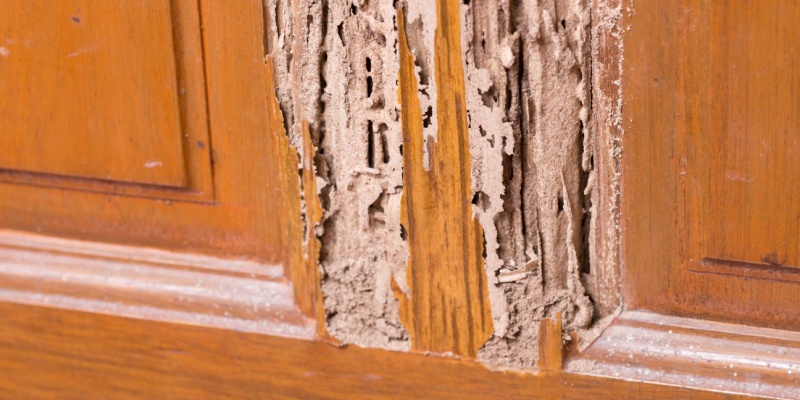No homeowner wants to discover drywood termites. These tiny pests can cause serious damage to properties. You may be wondering if termites are a real problem in your area. Unfortunately, drywood termites are indeed a common problem in Southern California, including Upland, CA. This region’s warm climate provides an ideal environment for drywood termites to thrive, leading to significant challenges for homeowners. Understanding the extent of the issue and how to manage it is crucial for maintaining the integrity of wooden structures and preventing costly damage.
Why Drywood Termites Favor Southern California?
- Climate Conditions: Drywood termites prefer warm and dry conditions, which are typical of the Southern California climate. Unlike subterranean termites, they do not require contact with the soil, allowing them to infest homes more widely and with less detectable presence initially.
- Year-Round Activity: In cooler climates, termites may become dormant during the colder months. However, in Southern California, the consistently mild temperatures allow drywood termites to remain active year-round, increasing the risk of prolonged and unnoticed infestations.
Impact of Drywood Termites
Drywood termites can cause extensive damage to wooden structures by eating wood from the inside out, weakening buildings over time. This damage is not only costly to repair but can also significantly reduce a property’s value. Unfortunately, because these termites do not require ground contact, they can infest and damage multiple areas of a building, from wooden beams to attic spaces.
Signs of an Infestation
1. Frass
Drywood termite infestations produce distinctive piles of wood-colored droppings known as frass, which resemble fine sawdust.
2. Hollow Sounds
Wood that sounds hollow when tapped often indicates termite activity, as the termites leave the outer surface of wood intact while consuming the interior.
3. Visible Tunnels
Infested wood may show smooth tunnels when broken open, a clear sign of drywood termite presence.
Managing the Problem
Prevention and Early Detection:
- Regular Inspections: Given the prevalence of termites in the area, homeowners should conduct regular professional inspections.
- Physical Barriers: Sealing cracks and crevices can help prevent termites from entering the home.
- Prompt Repairs: Repairing leaks and maintaining dry conditions within the home can deter termite infestation, as even drywood termites prefer some moisture.
Professional Treatment Options:
- Localized Treatments: If an infestation is detected early, localized treatments, such as injecting termiticides directly into the termite galleries, can be effective.
- Fumigation: In cases of extensive infestation, whole-house fumigation might be necessary to ensure all termites are eradicated.
- Heat Treatment: This environmentally friendly option involves raising the temperature of affected areas to levels lethal to termites.
Drywood termites are a significant concern in Southern California due to the favorable climate and their ability to cause extensive damage. Homeowners must be vigilant, utilizing regular inspections and professional pest control services to manage and prevent infestations. By understanding the risks and signs of termite presence, residents can take proactive steps to protect their properties and minimize the impact of these pests.


